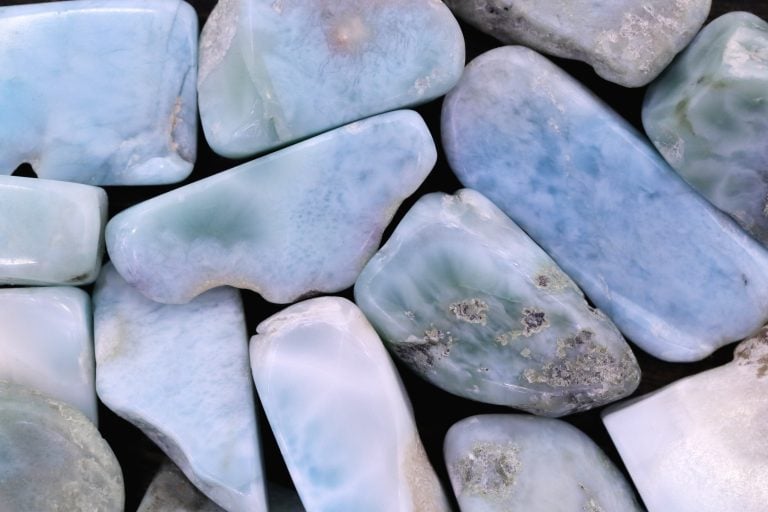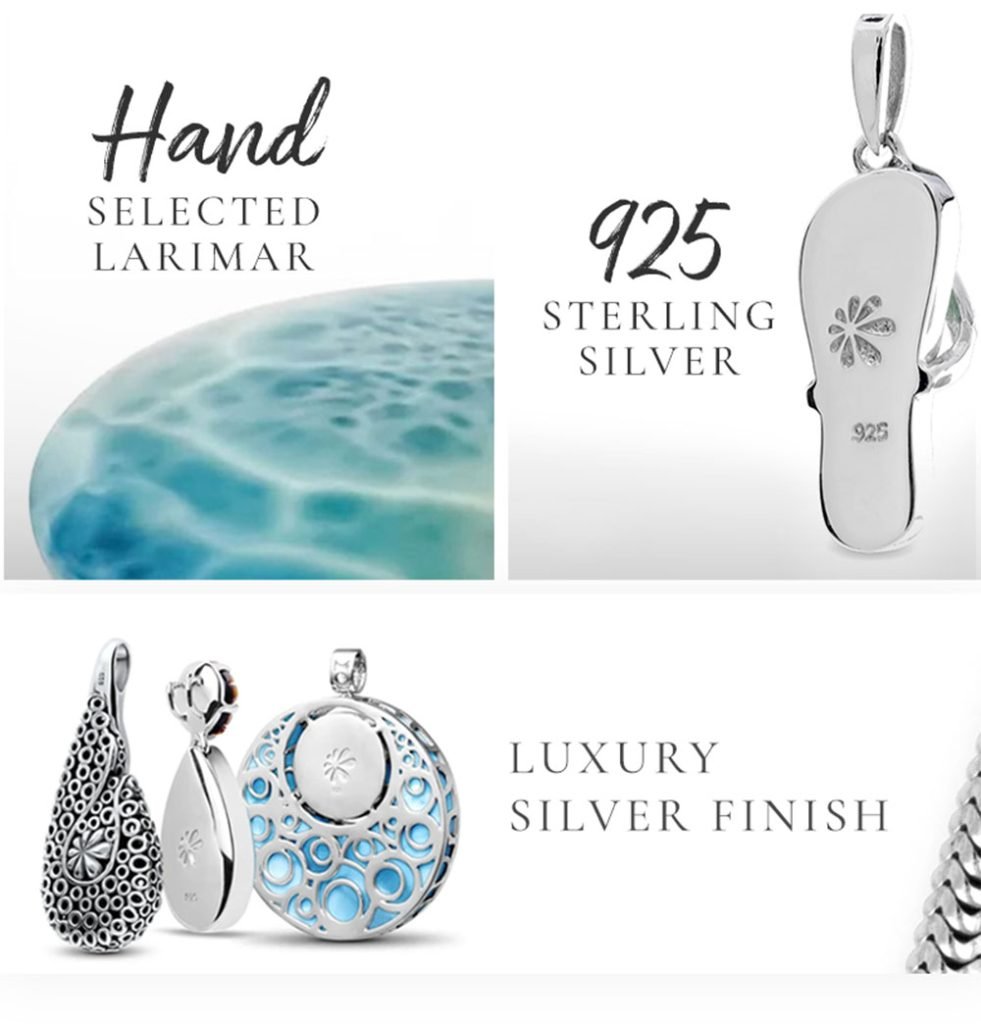💎 Why This Article Matters
Larimar is rare, beautiful, and increasingly popular — which also means it’s being faked more often. Many imitation stones are sold as “Larimar” but are actually dyed howlite, glass, or resin.
Before you spend your money, here are 7 expert ways to tell if your Larimar is real.
✅ 1. Check the Color — It Should Look Like the Ocean
Real Larimar has:
Shades of light blue, sky blue, turquoise, or greenish-blue
White marbling or wave-like patterns
Natural variation — no two stones look exactly alike
Fake Larimar (like dyed howlite or glass) often:
Has a flat, overly bright color
Looks too uniform with no natural gradients
🟦 Genuine Larimar looks like waves or clouds. If the color looks artificial or “painted on,” it’s probably fake
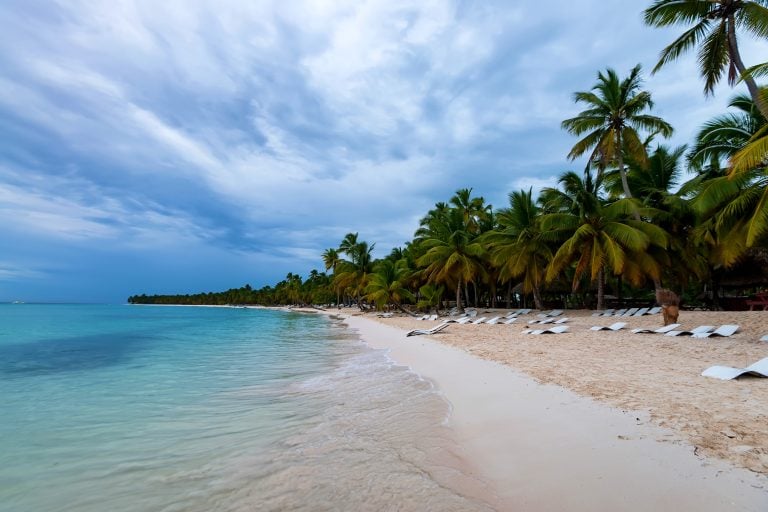
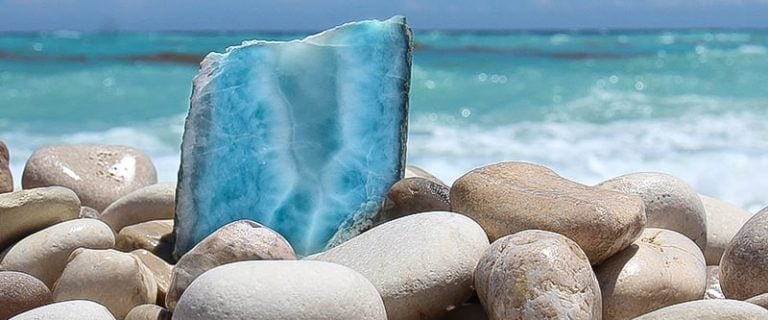
✅ 2. Feel the Temperature — Real Larimar Feels Cool
Hold the stone in your hand for 10–15 seconds.
Real gemstones like Larimar stay cool to the touch
Plastic, resin, or glass will warm up quickly and may feel cheap/light
✋ Cool = real. Warm or “plastic-y” = beware.
✅ 3. Look for White Streaks or Cloud Patterns
Larimar often features:
White streaks, swirls, or feathered inclusions
A natural-looking mix of blue and white, like Caribbean waves
Fake versions may look:
Perfectly solid in color
Printed or overly symmetrical
Tip: Turn the stone under natural light — the white inclusions should shimmer slightly, not look flat.
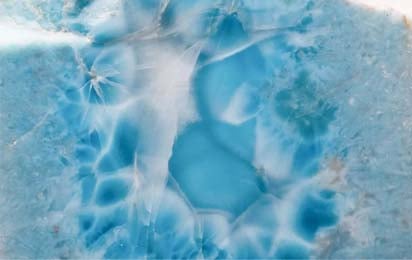
✅ 4. Ask Where It Was Sourced
Real Larimar only comes from one place: the Dominican Republic.
If a seller claims:
The Larimar came from “Asia,” “Brazil,” or gives no sourcing info…
👉 It’s almost certainly fake.
Be sure to avoid water and harsh sunlight, as Larimar is a delicate stone. Read: How to Care for Larimar Jewelry
🌍 No other location on Earth produces genuine Larimar.
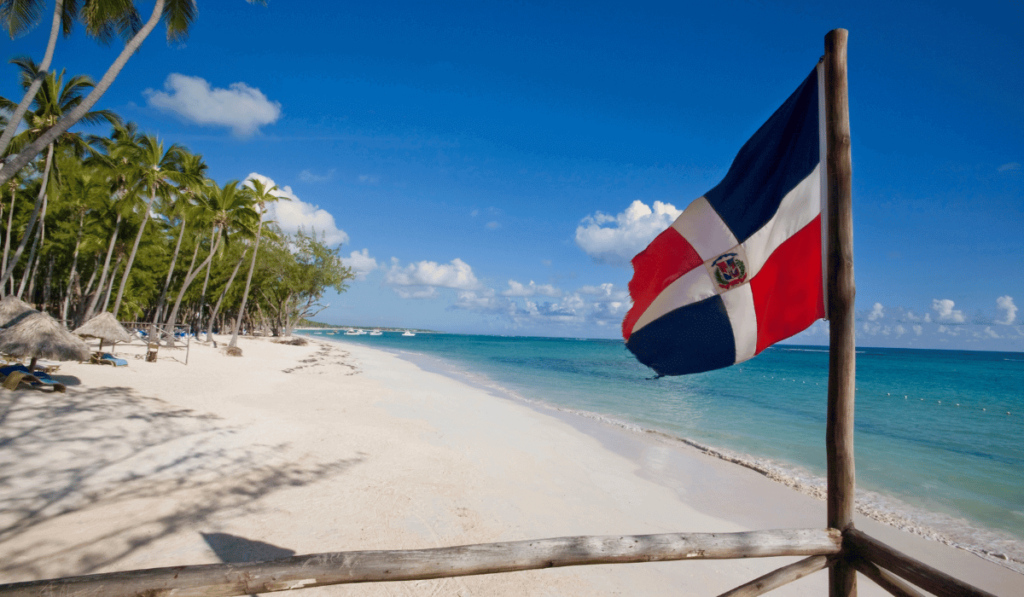
✅ 5. Check the Price — If It’s Too Cheap, It’s Probably Fake
While small, low-grade pieces can be affordable, high-quality Larimar isn’t cheap. Average price ranges:
Pendants: $60–$200+
Rings: $80–$300+
Premium pieces can reach $500+
Red flag: A large “Larimar” stone being sold for $15–$30 is probably dyed howlite.
🛡️ Mass-market platforms like Etsy and Amazon can include low-priced Larimar pieces, but often from vendors without a proven track record.
✅ 6. Test with a Jeweler or Gemologist
A professional can test the stone for:
Hardness (Larimar scores around 4.5–5 on Mohs scale)
Refractive index
Magnification of natural inclusions
You can also ask for a certificate of authenticity, especially if the jewelry is priced at a premium.
✅ 7. Buy from Reputable Sellers
The most important step? Buy from someone you trust.
Look for:
Detailed photos (not just one angle)
Proof of origin
Return policy or guarantee
Real customer reviews
✅ At www.marahlago.com, we only sell 100% authentic Dominican Larimar, ethically sourced and handcrafted by artisans. Shop Our Larimar Collection →
🔍 Summary Checklist: How to Spot Real Larimar
| Test | What to Look For |
|---|---|
| Color | Ocean-like blues with natural white patterns |
| Touch | Feels cool and dense |
| Appearance | Unique swirls or feathering, not flat or painted |
| Origin | Only found in Dominican Republic |
| Price | Fair market value, not too cheap |
| Professional Testing | Optional, but helpful for high-end pieces |
| Seller Reputation | Reviews, guarantees, transparency |
🙅 Common Imitation Materials
| Fake Stone | Description |
|---|---|
| Dyed Howlite | White stone dyed blue, often too bright |
| Resin/Plastic | Lightweight and easily warms up |
| Glass | May look too perfect, lacks natural variation |
🧘 Final Thoughts: Trust Your Eyes (and Your Gut)
When in doubt, follow these simple rules:
If the price is too good to be true, it probably is.
If the color looks fake, it probably is.
If the seller won’t tell you where it came from — walk away.
Larimar is rare, beautiful, and worth buying — if it’s real.


